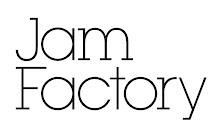Tell us about yourself, how did you become a textile artist?
I have always loved pattern, it’s history and significance across all cultures, on all types of surfaces. At Art School, looking at modern and abstract painting, I always felt the designs would look great as printed fabric. From the early seventies I have been playing, experimenting and making patterns on material. Frustrated with the fabrics available commercially I have hand painted, hand printed and knitted textile designs for items that I have constructed to sell as fashion and soft furnishings. Over the last decade I have made art pieces as abstract coverings, intentionally unwearable, incorporating social comment reflecting current concerns. Over the years I have also collected a huge amount of patterned vintage textile lengths as a reference to textile designs from the 20th Century.
Which textile artists, craftspeople, writers, artists, musicians, anyone do you find particularly inspiring?
I have always loved artists whose work could be easily converted to textile designs. Artists like Jackson Pollock, Stuart Davis, Sonia Delaney, but there are also many others, too many to mention.
Welcome us to your studio - where is it?
I moved house and studio about 18 months ago into quite a large place. My studio is upstairs in a large room with fabulous natural light and a big balcony.
I have a room dedicated to my collection of vintage fabrics and another room referred to as the ‘inside shed’. I have been very productive in this studio space, as, for me, these elements of space, light and ordered accessibility enliven my creative energies.
The work for the exhibition: Can you describe the specific themes reflected in this body of work?
The work in this exhibition is from a much larger collection titled ‘Disruptive Pattern Syndrome’ which made up a solo exhibition that I have exhibited in many galleries around Australia in the past few years. With this body of work I have used many types of camouflage fabrics to convey the elements of visual disguise. In contemporary society camouflage sits in a broad arena from military application to fashion items. This has allowed me to explore, abstract and play with the principal themes of similarity and difference.
Describe your method of production in this current work?
For this work I wanted the opportunity to create my own ‘camouflage’ fabric, using the digital process of designing and printing, now readily available.
Playing with patterns and shapes that I created on the computer in Photoshop I developed many designs that followed the principals of merging and blending. I have had these designs digitally printed onto short lengths of cotton drill, in 4 different colour ways. The sewn garment plays with the notions of a military uniform and is placed in front of the panels of the same fabrics to create a chameleon pattern play that I’ve called ‘Neo-Camo’.
skip to main |
skip to sidebar

News, Reviews and Previews from South Australia's premier craft and design centre
About Me

- JamFactory
- A unique centre for the design, production, exhibition and sale of work by leading and emerging Australian designer / makers.
address
19 Morphett Steet Adelaide South Australia
Opening Hours
Mon - Sat: 10 - 5pm
Closed Sunday and Public Holidays
Closed Sunday and Public Holidays
JamFactory Alumni
- Alison Arnold
- Brendan Miller
- Clare Wilson
- Danielle Rickaby
- David Potts
- Erin Keys
- Erin Lykos
- Gareth Brown
- Hannah Carlyle
- Isabella Niven
- Jaan Poldaas
- Jacqueline Knight
- Jason Moss
- John Quan
- Julie Pieda
- Karen Cunningham
- Kath Inglis
- Katrina Freene
- Kirsten Coelho
- Lauren Simeoni
- Leonie Westbrook
- Maria Parmenter
- Maria Parmenter
- Meghan O'Rourke
- Meghann Jones
- Michelle Kelly
- Michelle Taylor
- Nick Mount
- Pauline Delaney
- Peta Kruger
- Rod Mosel
- Sarah Rothe
- Shauna Mayben Swanson
- Sim Luttin
- Sorcha Flett
- Stephanie James Manttan
- Sun-Woong Bang
- Susan Frost
- Takeshi Iue
- Tamara Hahn
- Tegan Empson
- Tom Moore
- Vanessa Williams
- Vipoo Srivilasa
- Zoe Warburton
In the shop
Other Blogs and Artists Sites
- Anna Davern Blog
- Bernadette Trainor
- Chloe Shay
- David Neale
- David Neale Blog
- Emma Fielden
- Gerry Wedd
- Gray Hawk
- Humna Mustafa
- India Flint
- Jane Bowden
- Jane Sawyer
- Jasmine Matus
- Kenji Uranashi
- Lauren Simeoni
- Leslie Matthews
- Mark Vaarwerk
- Matt Dwyer
- Mel Robson
- Mel Young
- Mel Young Blog
- Michelle Kelly
- Oliver Smith
- Peter Walker
- Petra de Mooy
- Sean O'Connell
- Shannon Garson
- Shannon Garson blog
- Vernon Bowden
- Zoe Brand
- Zoe Brand Blog







